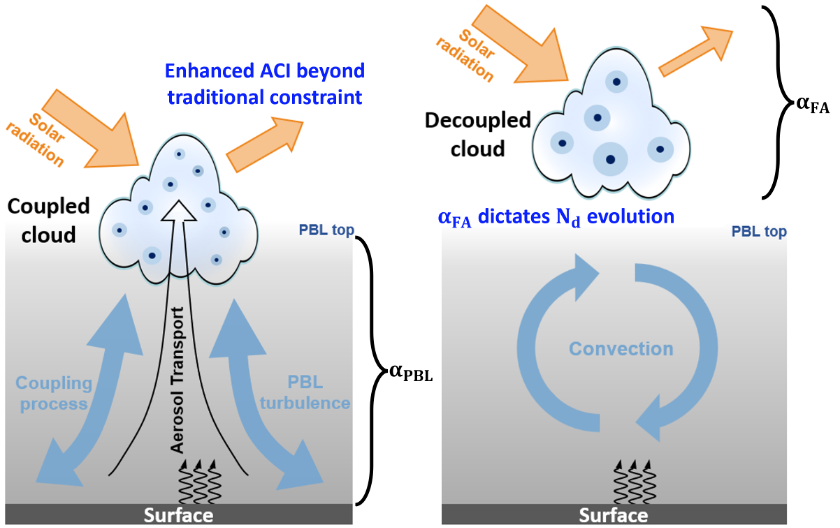Constraining effects of aerosol-cloud interaction by accounting for coupling between cloud and land
Submitter
Su, Tianning — Lawrence Livermore National Laboratory
Li, Zhanqing — University of Maryland
Area of research
Cloud-Aerosol-Precipitation Interactions
Journal Reference
Science
Aerosol-cloud-interaction (ACI) remains a source of uncertainties in climate forcing, stemming partially from a paucity of in situ measurements of aerosol and/or cloud condensation nuclei at the cloud base. Most observation analyses of the ACI rely either on aerosol column loading measured by space-borne and ground-based sensors that would be valid under well-mixed conditions, which is usually the case within the planetary boundary layer (PBL). The state of cloud-PBL-surface coupling thus matters to the estimation of the ACI. Using the methods of determining the PBL height and the state of cloud coupling over land, we propose a new approach to estimating the ACI by accounting for the coupling, reducing the uncertainties and the systematic discrepancies between observation- and model-based estimates of the ACI.
Impact
By accounting for the coupling between cloud and land, this research opens new pathways for enhancing our understanding and quantification of the ACI, helping to bridge the existing gap between observational and model-based estimates. It emphasizes the need for accounting for land surface coupling in any estimation of the ACI, which can potentially improve our projection of climate change.
Summary
The ACI is vital for regulating Earth's climate by influencing both energy and water cycles. Yet, quantification of the ACI bears large uncertainties, evidenced by large discrepancies among different estimations, especially systematic ones between observed and modeled estimates. This study quantifies a major bias in ACI determinations, stemming from conventional surface or space measurements that fail to capture aerosol at the cloud level unless the cloud is coupled with land surface. We introduce an advanced approach to determine radiative forcing of ACI by accounting for cloud-surface coupling. By integrating field observations, satellite data, and model simulations, this approach reveals a drastic alteration in aerosol vertical transport and ACI effects caused by cloud coupling. In coupled regimes, aerosols enhance cloud droplet number concentration across the boundary layer more homogeneously than in decoupled conditions, under which aerosols from the free atmosphere predominantly affect cloud properties, leading to marked cooling effects. Our findings spotlight cloud-surface coupling as a key factor for ACI quantification, implying potential under-assessments by the traditional estimates using such widely available measurements of aerosol optical depth.


